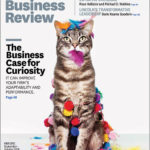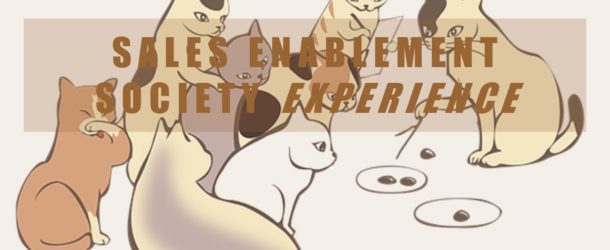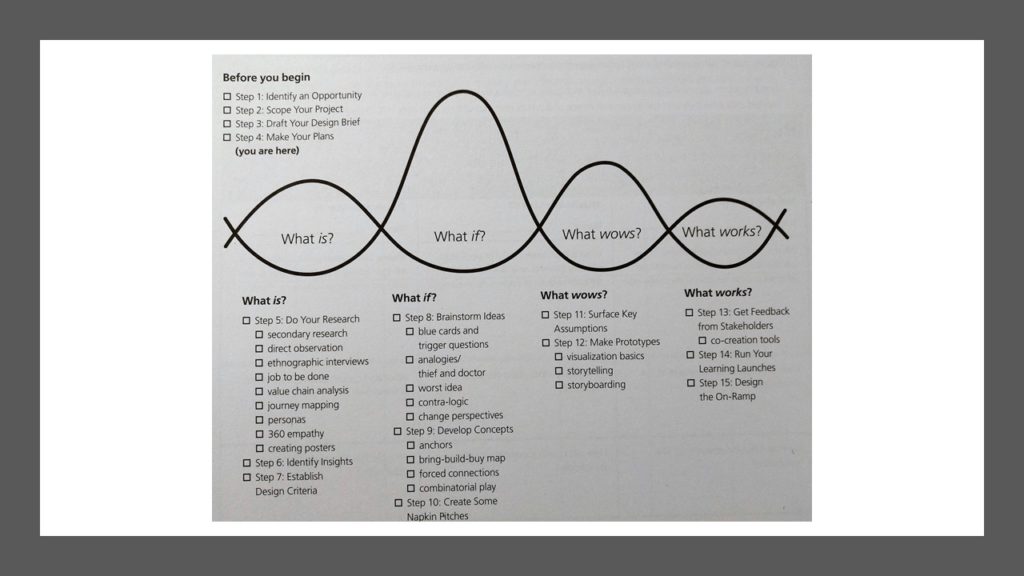S Y N O P S I S
I can already hear it, “So what’s with all the cats?” It seems to be the quarter for cats. I’m attending a conference where the moniker is a lion and the cover of the Sept / Oct Harvard Business Review is a cat – The Business Case of Curiosity – so it felt fitting to find another bunch of curious cats for the banner of this post.
I’ve spent some time this summer reading and analyzing the topics of Designing for Growth by Jeanne Liedtke and Tim Ogilvie, driving change (The Chaos Imperative by Ori Brafman) and digital engagement. Just some light reading, right? I have found each of these books extremely thought provoking, insightful and relevant in driving change and growth as the world of commerce has gone digital. Customers have changed their buying behaviors and have expected suppliers to have kept up with them. However, most have not and are working fast to catch up.
What does this really mean to supplier organizations?
How will suppliers engage customers more successfully?
How will suppliers create influencers in the market for their brands?
We cannot solve our problems with the same thinking
we used when we created them.
– Albert Einstein
I’ve been a sales aligned marketer the bulk of my career and started out as an application developer, systems engineer, systems and business analyst / consultant and industry analyst. My passion is marketing that enables impactful outcomes of value for customers, impactful business value and growth for the supplier, while enabling sellers to sell. Just another day at the office and consulting.
NEW THINKING ERA
The press and news is littered with the topics of growth, innovation / transformation / disruption, customer engagement and digital transformation. This topic fascinates me and frustrates me as I work for and with organizations that say one thing, but continue doing the same old things due to the hierarchical structures that are focused on products.
This is where Ori’s book is brilliant. He spent some time working with the military and discusses creative, out-of-the box thinking to drive change with unusual suspects. Where else would you find a larger, more hierarchical organization than the military? If they can create change and solve complex challenges, I’m pretty sure commercial business can too. My favorite story, Yaron the Tornado (chapter 2) and contained chaos.
I do admit, I had to chuckle when Ori talks about putting his childhood friend in a protective bubble. I had immediate flashbacks of few times when I could have benefited from a little bit of a protective bubble. Being an agent of change is not for the weak of heart. It takes heart, the ability to cross an organization to obtain acceptance, while pushing the limits of the organization.
GROWTH AND COLLABORATION
Growth is diminishing and operational costs have been cut to the bone to drive margin and some are having to take a hard look at what to do next and how to begin doing things differently in order to drive growth through innovation, transformation or disruption. This is when I started looking at different approaches of attaining growth without a complete organizational overhaul. Let’s face it, that kind of change is big, hard and ugly and takes an enormous amount of time that most do not have to keep up in the market. Thinking in terms of Agile and creating building blocks of change will lead to larger change and impact over time. Any runner will tell you:
The hardest part of starting a run, is the first step out the door.
A step in the right direction is fundamental to both of these books, cross functional teams and collaboration mixed with a little creative thinking. Sales and marketing have siloed themselves from each other for far too long and those walls need to disappear. They need to work as a single organization focused on the common goals of the organization and implement the execution of tactics to achieve it.
DIGITAL TRANSFORMATION
Customers are researching and using influencers in the market to guide them to the suppliers they will choose to engage with to solve their challenges. Content, messages, collateral, tools, etc. across the organization need to be consistent, targeted and personalized. Understanding who the customer is and what they are trying to achieve is core to the discussion of the next generation of Going-to-Customer instead of market. Organizations will go through the exercise of :
- Defining just who is their customer?
- What are their challenges?
- Can we help them solve those challenges?
- What value can we deliver to those customers?
- How do we sell to those customers? Meaning a cost based utility or a value based solution – both are required and have differing sales models
Organizations that are defined by products, will have to look at where they plan to focus to drive growth and profitability and apply models appropriately. Again, maintenance and growth products are both in the portfolio and require different resources and delivery models to reach targeted goals of growth and profitability.
CUSTOMER ENGAGEMENT
Commerce has changed and all B2B organizations should have taken notice when Amazon led the consumer market drive from bricks and mortar outlets to online in 1994. B2B is feeling the pressure as customers comb through their digital assets and leave the sites perplexed with mixed messages, what do they really do, what does this mean, how can it help me … the list of questions surfaced is greater than those answered.
The quest is on to clean up the digital assets, messages and operate through the lens of the customer, rather than how organizations operate internally. Customers are seeking a partner that provides insight into solving their challenges with impact to their business. Customers will engage with those who provide insightful information over those who provide data.
EXPERIMENT IN PROGRESS
I’ve been graciously invited by Scott Santucci to participate in the “What’s Possible” Experience Room at the upcoming Sales Enablement Society – Annual Experience in Denver. Scott and I were once colleagues at META Group just a few short years ago. As the banner (and link) below indicates, it is more of an experience than a typical conference. The first one was held at the University of Texas at Dallas last fall and now I’ve been pushed off the ledge to engage and stop sitting on the sidelines watching, reading and listening like a wallflower.
Always up for a challenge and truth be told, Scott has invited me to attend meetings, events, etc. since the society initiated here in the Washington, DC area back in January of 2016. I missed the first meeting and then life happened … and I watched from the sidelines, after all, what business does a marketer have in a room full of sales enablement professionals? Did I really want to enter into that lion’s den? I watched as they grew from a local meet up, to a global society until the phone rang again early this summer.
Scott, ever persistent and enthusiastic, asked if I would attend a meeting in Tysons one evening earlier this summer to listen and add to a discussion on messaging to tell the story of the society’s success. He does have sales in his blood and the art of persuasion, he had me at messaging, my marketing passion to tell a story. Ok, I’m in … that led to round two a few weeks later and a drive to Fredericksburg where Gerhard Gschwandtner, founder of both Selling Power Magazine and MindsetScience, hosted the next discussion of the society and the story.
Now I’m in deep discovering, just how does a society of professionals with no money and all volunteers embark upon adopting a growth mindset as a distributed and networked organization and would go from 16 members in a conference room in January 2016 to:
- >5,000 members and growing daily
- 1 Chapter to >50
- Local to DC to Global – 15 Countries
- Hold it’s first Annual Experience a little over a year later
LET’S WRAP THIS UP
Ok, I admit it, I’m a Scorpion and curious by nature and now intrigued in how this experiment in adopting a fresh mindset did not let the barriers of geography, roles, definitions, personal bias, etc. get in their way to creating, developing and growing the Sales Enablement Society.
So what does this upcoming Experience have to do with
design thinking, growth, innovation and digital engagement?
The society itself is a living example of applying a mindset of growth, innovation and creative thinking to share, learn, experience and work to grow the same spark for growth and innovation in the organizations they work and the customers they serve collectively. The Society has had their growing pains, I’ve watched them, however, the spirit to advance the next generation of customer engagement and digital transformation within their organizations keeps them moving forward. I’d be more shocked if you put a bunch of highly dedicated and passionate professionals in a room and didn’t see a little vocal banter.
Early in my career when I was tapped to lead the first cross functional Product Team for my product family, I / We the team, unknowingly practiced many of the same concepts back in the early 1990’s without the benefit of a digital platform to share ideas and converse across 3 locations and 2 countries on an analog conference line. I was the star of the first mobile ads, “Can you hear me? …… How about now? ….. Can you all be quiet so I can speak!” as I phoned in often from loud and busy airports. That team was pure MAGIC!
Some meetings were merely status, catch-ups, others were longer with formal presentations to each other and still others had aspects of what Jeanne Liedtke covers in Designing for Growth with our What If and Wow discussions with the first, cross functional, multi geography team for our product family.
I could have used a protective bubble to contain the chaos I would bring upon myself in one of these meetings that I’ll share. The team still operated using a Waterfall Methodology and we were deep in the development cycle and nearing the end. I needed to present to the team and request that we include a significant enhancement to the project to meet customer driven requirements in this dev cycle / release and what would that mean to the release and everyone’s work.
I decided to break the tension I knew would ensue. I brought some toys to the meeting – Koosh Ball Slingshots. I’m well into drawing a timeline of milestones on the whiteboard in front of about 15 of my peers and superiors and they are all deadly silent. I’m getting zero reaction, highly unusual. So I ask, “What’s up?” I’ll never forget my favorite development leader raising his hand quite slowly and me saying, “YES, SPEAK UP ALREADY ….” His response was priceless:
We’re trying to figure out how stupid you really are …
We’re confused as to your ASK and ARMING us with weapons!
Protective bubble would have been helpful for the Controlled Chaos that would ensue! However, the team delivered the requirement, on time, working together creatively and meeting customer demand with a little creative planning and delivery. Two lessons:
- Anything is Possible – how much time and money do you spend to achieve what value?
- DO NOT – under any circumstance, arm your team with weapons in a Design Thinking meeting!
TAKE AWAYS
This is the first post of several that I’ll put up over the coming month to share my experiences with the Sales Enablement Society and the topics of: Growth, Innovation and Customer Engagement in this time of Digital Transformation. I also encourage you to:
- JOIN the Society or one similar
- START a chapter if none exists in your location
- CONSIDER attending the Annual Experience in Denver
- WATCH the videos from last year’s Annual Experience – Specifically these Keynotes and Round Tables – Very Insightful
- FOLLOW this year’s experience as it occurs live via the social channels I’ll share as I discover them
I have learned to overcome my perceived bias as to the participants of the society, there is quite a mixture of participants from: Authors, Suppliers, Enablement Practitioners, Sales, Marketing, Educators, CEOs, VCs, etc. It’s quite a network that I have enjoyed meeting this summer. I have promised to be a listener as I participate in my “rookie” experience … oh who am I kidding, for those who know me, it will take about 5 minutes and I’ll be back to yelling, “Tornado”! One Last Take Away: READ Ori’s book to understand “Tornado” and controlled chaos better! This question comes up often,
How does a group like this grow so fast, when the organizations the members represent are not growing as fast and are squeezing margins?
My take on this is the removal of traditional barriers that are inside organizations that hinder collaboration, creative and innovative thinking and a forum for free conversation – yes, truly free conversation. Even when we say it’s after hours, I really want to hear what the team thinks, etc., most are guarded in what they will say because we have all been burned at one time or another in one of these so called “free conversations” and yet the military fosters them.
This is really quite an example and experiment of “What’s Possible” when we stop saying “can’t” and seeing obstacles and start figuring out “how” to be creative and collaborative and “Just Doing” by taking leadership and engaging as we seek to do with our customers.
I admit while I personally find it common sense and a normal mode of thinking, it is not for everyone and is further complicated inside of large organizations – that is the frustrating part of the equation for me that I opened with at the top of this post and the bias I have to “check at the door” when I work with clients. I may also have an unfair advantage here too, I have many years behind me for having grown up with a Father who despised the word “can’t” and used to reply back when he heard it:
Can’t Never Did Anything
To this day, my brother, mother and I are conditioned with the reply to each other when one of us says it.
Scott has written a letter that you can read documenting the 2 year journey and the road ahead for the society, the quote I pull out of it that best describes the society is this:
A marketplace of insight that is the by product of the
exchange of ideas through engaged conversations
The organizations that will survive, thrive and grow in the future will be the ones that apply a Growth Mindset to Customer Engagement in their Digital Transformation journey.
* * * * *
Now I ask you: How will your organization fuel your future growth and revenue engine?
Share your comments below or connect with me, I’d love to discuss this further with you and your teams! Join the conversation on LinkedIN too!
Photo credit: Pixabay, Conference Mission Planning, Naobim, (CC0)





